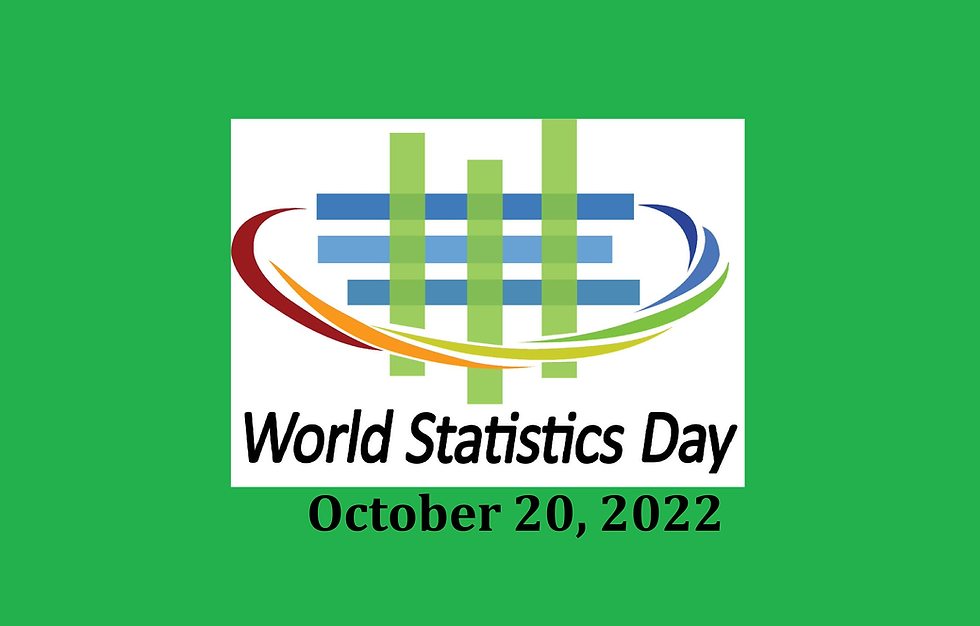Education is the most powerful weapon which you can use to change the world.
- Sheryl and Dan Malin

- Oct 20, 2022
- 10 min read
CONTINUING THIS WEEK ON A NEW SERIES, CHANGE? PLUS, CONTINUING ON THE BOOK TEN-MINUTE RELAXATION FOR MIND AND BODY. ALSO, CANCER: CIVILIZATION’S -NO. 2 KILLER?????
Hello followers,
Good morning!

My how the week is going, slipping away.
Cannot believe it is Thursday all ready.
Counting down to our flight Saturday!
Today Dan and I will be exploring, your perspective shifts.
If you let it, when life becomes harder it can help you look at things differently, from a new vantage point.

You might see change as an obstacle you need to overcome or a mountain you need to climb.
When you successfully jump over the obstacle or make your way up that mountain, you can look back and see how far you have come.
The lessons you learned along the way become tools in your treasure chest for the next time.
Consequently, your perspective shifts.

Tomorrow, change creates personal growth.
Since this is Breast Cancer Awareness Month, every post this week; I will share something that I have written or done in the past that has to do with this very topic.

OCTOBER IS THE MONTH FOR BREAST CANCER AWARENESS
ITS BREAST CANCER AWARENESS MONTH
This was posted on Wednesday, April 25, 2012, on my blog
10 Breast Cancer Facts You May Not Know

There is still a lot we do not know about breast cancer, but we are discovering more every day.
Here, ten key facts that can ease your fears, answer your questions; even save your life.
In the United States, breast cancer is the second most common cancer among women and the second leading cause of cancer death among women of all races and ethnicities.
Yet many people are still unaware of their risk and of which factors or lifestyle choices are most significant.
Here are ten key facts about breast cancer that every woman and man should know.

Improving Breast Cancer Statistics
About 230,000 new cases of invasive breast cancer will be diagnosed among U.S. women this year, with approximately 39,000 dying from the disease.
But a more positive number is this: There are also currently more than 2.5 million breast cancer survivors in the United States.

"Earlier diagnosis and better treatments have improved survival of people diagnosed with breast cancer,” says Kristi Funk, MD, breast cancer surgeon and founder of the Pink Lotus Breast Center in Los Angeles.
In fact, death rates from breast cancer have been declining since about 1990, according to breast cancer statistics from the American Cancer Society, with women younger than 50 years of age showing the largest improvement.

Breast Cancer and Genetics
According to the American Cancer Society, breast cancer risk is approximately doubled among women who have one first-degree relative (mother, sister, or daughter) with the disease.
However, more than 85 percent of women with breast cancer have no family history.
“Many women over 40 who do not have a family history think it is okay to skip breast exams and mammograms, which alarms me, because most women who get breast cancer do not have a close relative with the disease,” says Dr. Funk.

Men and Breast Cancer
Approximately 2,100 new cases of invasive breast cancer will be diagnosed in men this year, with about 450 men dying from the disease.
The American Cancer Society estimates that a man’s lifetime risk of developing breast cancer is about 1 in 1,000.
“While this number does remain small, men can develop breast cancer,” says Funk.
“In addition, due to the fact that men rarely consider breast cancer a possibility, they typically delay seeking attention and get diagnosed at a later stage of disease.”

Benign Breast Lumps
Feeling a lump in your breast can be a terrifying experience, but according to the National Breast Cancer Foundation, eight out of ten breast lumps are benign: meaning not cancerous.
Most breast lumps are cysts (fluid-filled sacs within your breast), benign tumors such as fibroadenomas, mastitis (breast inflammation), blood clots from trauma, scar tissue, or simply nodules of dense breast tissue, which are not typically linked to cancer, Funk explains.

Breast Cancer Risk and Age
Breast cancer can develop at any age, but risk does increase as you get older.
Statistics from the American Cancer Society show that breast cancer risk can be stratified by decade in life.
For women at 20 years of age, the risk is 1 in 1,760.
At 30, it is 1 in 229, increasing to 1 in 69 at 40, 1 in 42 at 50, 1 in 29 at 60, and 1 in 27 at 70.
The overall lifetime risk for developing breast cancer is 1 in 8.

Breast Pain and Breast Cancer
Pain is the body’s early alert system, letting you know when medical attention may be required.
However, breast pain is not a common breast cancer symptom.
It is more likely to be associated with certain non-cancerous conditions.
Says Funk, “Pain is more typically related to hormonal changes or is cyclical depending on your menstrual cycle."

Alcohol and Breast Cancer Risk
Women who consume one alcoholic drink a day have a small increased risk of breast cancer compared with women who do not drink at all.
Women who drink two to five glasses of alcohol daily have approximately 1.5 times the risk.
However, Funk says that moderate alcohol consumption has been associated with better heart health.
Work with your doctor to find the right balance to help prevent heart issues without increasing your breast cancer risk.

Dense Breasts and Breast Cancer Screening
“Breast cancer typically occurs in the dense part of the breast, not the fatty tissue,” Funk says.
“Therefore, women with dense breasts have more tissue that puts them at a higher risk of breast cancer.”
Dense breast tissue can also make it harder to spot cancer on mammograms.
Funk recommends that women with dense breasts also undergo ultrasound or breast magnetic resonance imaging (MRI).

The Link Between Breast Cancer and Colon and Prostate Cancers
Approximately 5 to 10 percent of breast cancer cases appear to be hereditary.
The most common cause is an inherited mutation in the BRCA1 and BRCA2 genes.
It is thought that these genetic mutations play a role in other types of cancers, too, including colon and prostate.
That means that having a father or brother with BRCA1 or BRCA2 mutations may put a woman at risk for breast cancer.
However, “data on colon and prostate cancer increasing the risk of breast cancer has been inconsistent," Funk says.
"I suggest that women who have a strong family history of any type of cancer should seek genetic counseling and understand their risk, especially if there is breast and ovarian cancer accompanying colon or prostate cancer in the family, or if there is breast cancer under 50 years of age or ovarian cancer at any age.

Breast Cancer: Fear vs. Reality
Research has shown that women are more afraid of breast cancer than of any other illness, even though heart disease is the No. 1 killer of women in the United States.
It kills more women over 65 years of age than all other cancers combined.
In fact, you are four to six times more likely to die of heart disease than of breast cancer.
The takeaway?
Be alert to various cancer risks but live a heart-healthy lifestyle to best protect yourself.

OCTOBER 20th, Dan, and I thought on continuing this segment with the series with some fun; What is it about October that is so significant during this month?
World Statistics Day – October 20, 2022

World Statistics Day falls on October 20 every five years, which means every half a decade, statistics about our lives and related things are examined and discussed for better decision-making for the times to come.
The day was established in 2010 by the United Nations Statistical Commission to put a spotlight on the importance of statistics and the significance of academic research on the development of civil society and business.
We observe this day to acknowledge the significance of statistics in our lives.

You might wonder how exactly statistics impact your life, and the answer is right in front of you.
Be it healthcare, law, finance, science, education, or spending habits, statistics make us aware of facts and reveal valuable information in the language of numbers.
Everything concerned with our daily lives, including how we grow up, start families, work in our chosen industries, and decide where to live, can be studied and examined under statistics.
These statistics are used by the government and other agencies to help plan for the years ahead.
Professionals such as mathematicians, city planners, enterprises, digital marketers, and social scientists also rely heavily on statistics for their decision-making process.

These figures give us hard and real facts and, to a considerable extent, eliminate other subjective factors that influence decision-making.
Statistics constantly impact how countries and governments select and trade resources.
Officially, World Statistics Day raises awareness regarding the accomplishments of statistics that were founded on the core values of service, professionalism, and integrity in 2010.
The Statistics Division of the United Nations Department of Economic Affairs has overseen planning and coordinating this global campaign ever since.
This international day only occurs every five years, with the next celebration scheduled for 2025, which is due in three years.

Reliable and well-timed statistics are indicators of a country’s progress.
It is probably the reason behind the decision to observe World Statistics Day every half a decade, giving countries, their people, and the world an opportunity to gain experience, adapt, and produce quality statistics through the way they choose to live.

Time is precious and is priceless, so Dan and I will continue each day to pull from a box of 365 inspirational quotes; one quote and share with you.
Today is:
BEGIN TO BE NOW WHAT YOU WILL BE HEREAFTER.

Today Dan and I will be continuing the book, Ten-Minute Relaxation, For Mind and Body by Jennie Harding.
Whenever you are feeling under pressure, ten minutes is all you need to relax totally, using tools that are always with you; your senses.
This book is packed full of wonderfully simple ideas and exercises for using sight, taste, smell, hearing, and touch and that vital sixth sense of intuition to rebalance your energies and bring you back into harmony with the natural world around you.

Identify your favorite sensory relaxation solutions and combat that stress!
Per Dan and my experience this is another component in keeping ourselves healthy, meditation.
By using your five senses, you can learn to relax in just ten minutes.

CHAPTER 2; THE SENSORY JOURNEY; SMELL
SMELLS AND MOODS-
KEY ESSENTIAL OILS- ROSEWOOD
Rosewood helps dry or mature skin and eases stress and anxiety.

Try four drops rosewood and four drops frankincense in four teaspoons sweet almond carrier oil to soothe dry skin and as a massage oil to help stress.
Tomorrow- FRANKINCENSE

As I ponder over all that I have learned, I have come to find that we all have our own blueprint.
Our bodies are precious and there are many components in taking care of them.
Throughout the blog, Dan and I have related the separate ways through body, heart, and soul.
It is all about power of knowledge and learning to take care of yourself, keeping your cells happy.
Our immune system is one of the key factors in keeping healthy.
It is important to know how it works!

Cancer: Civilization's - No. 2 Killer
Continuing from yesterday, Dr Cornelius Moerman graduated in medicine in 1930 and since then has devoted his entire professional life to cancer research and treatment. His theory of cancer, which he called the Metabolism Theory, he developed independently, but because his reasoning was based on the new knowledge about the respiratory processes of cells and the enzymes necessary for their accomplishment, his conclusions of course inevitably coincided with those of Warburg, Gerson, and Koch.

The English translation of his book A Solution to the Cancer Problem was published in 1962 by The International Association of Cancer Victims and Friends Inc., Los Angeles.
Although doctors Gerson, Koch and Moerman each separately arrived at the same conclusion and demonstrated the theory by their successful treatment of human patients, it was Dr Warburg who demonstrated visually in the laboratory the actual changing of normal cells into cancer cells.
In fact, Dr Warburg was not the first to demonstrate that cancer arose from cells whose normal respiration had been disturbed. P.G. Seeger had proven this in 1936, 1937 and 1938 but it was F. Windisch in 1947 who succeeded in changing normal cells into cancer cells by intermittently withholding oxygen from them, an experiment repeated in 1953 by H. Goldblatt and G. Cameron.

Dr Warburg's experiments, however, measured the degrees of respiration and fermentation involved in the transformation of cells, and measured the oxygen pressures inside tumors in the living body.
Dr Warburg did not physically interfere with the experimental healthy cells in any way, and he did not employ chemicals, heat, or radiation; he merely reduced their supply of oxygen.
When he reduced the oxygen needed by the cells for normal respiration by thirty-five per cent, they de-differentiated to become cancer cells.

How can cells in the human body with an unrestricted air supply be deprived of oxygen?
Answer: toxemia (unhealthy blood).
Blood carries oxygen to the body's cells together with the nutrients the cells need to utilize the oxygen (the vitamins and minerals from which respiratory enzymes are made).
Unhealthy blood is low both ways and sluggish in its flow.
Dr Warburg's experiment in the laboratory took only days, but in real life cancer may take years, maybe few, maybe many, depending on the degree of toxemia, but when the critical point is reached the result is the same.
Thus cancer, as with heart disease, can to a considerable extent be predicted just by observing a person's dietary and other living habits.
A proper blood test which considered blood viscosity and oxygen levels as well as the usual factors would be more precise.

As previously explained, in conditions of toxemia before symptoms of impending disease become apparent, there appear in the blood microorganisms which increase in numbers as the milieu interieur further deteriorates.
The relationship between this indicator of toxemia and the subsequent incidence of cancer was observed in a study of twenty-five patients over a twenty-year period by Dr Guy Owens, a surgeon in Amarillo, Texas. He said in 1979:
"We selected twenty-five cases from my practice where the organism was repeatedly found during blood counts.
They were run of the mill office cases, being male, female, old and young, but apparently in average good health.
Over a 20-year period, twenty-three of these people came down with malignancy of one kind or another proven by surgery and proper pathologic examination.
Two cases were lost from our records although one was known to have died from an obscure abdominal condition."

It is easy to understand why researchers concentrating on studying one disease can easily be led to false conclusions having identified a microbe present at the scene, and why the cancer/virus controversy went on for years.
However, Dr Owens knew that all people carry within them these organisms and that it was their multiplication and behavior that indicated a pathological condition.
What he did not know was how the pathological condition caused normal body cells to change into cancer cells.
Continue tomorrow

The PHRASE TO REMEMBER; Health is Wealth.
We stand by this and continue to do daily; walk, meditation, and Qigong.
If you would like to follow with us; hash tag words #walk, #meditation #Qigong on the right of the main blog page.
POWERFUL WEAPON
Education is the most powerful weapon which you can use to change the world. #educationisthemostpowerfulweapon#powerfulweapon#weapon#youcanuse#changetheworld#change#world#inspirational#motivational#newbeginnings✨

Until Friday, the secret of change is to focus all your energy
not on fighting the old, but on building the new.
























Comments